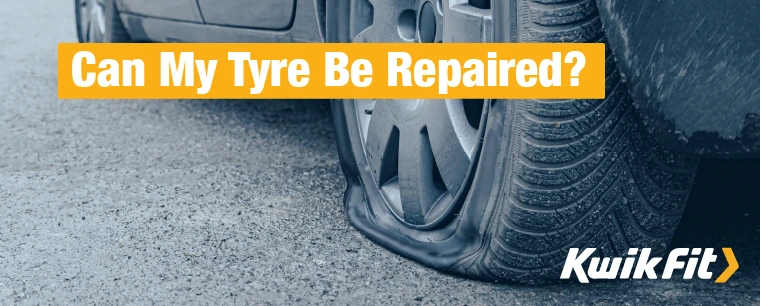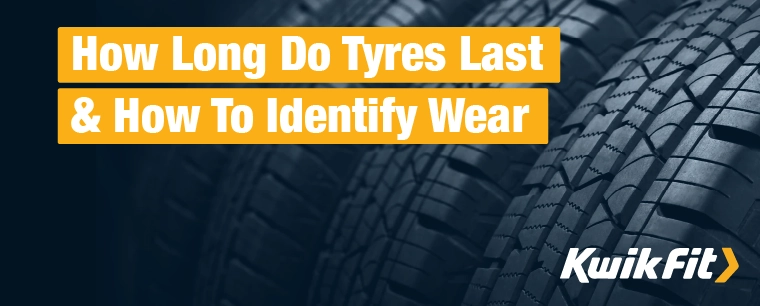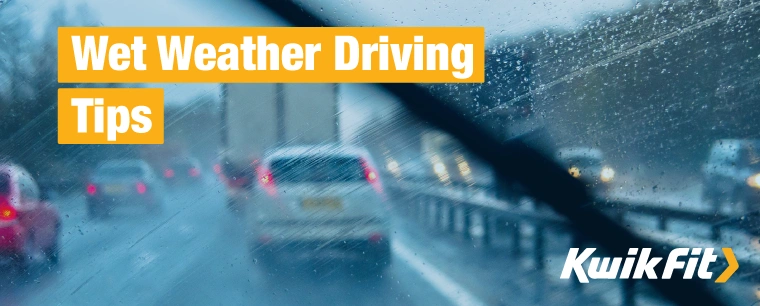Stopping Distance – Tyres Play a Starring Role
Bradley Jando | Thursday 9th September 2021 2:50pm
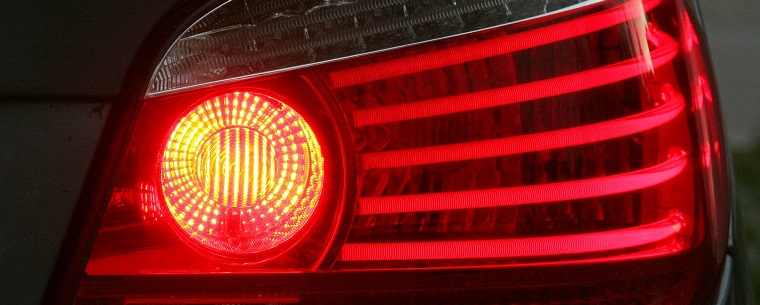
When you need to stop, you need to do so quickly and safely regardless of the situation or type of road you're driving on. Not everyone realises how important tyres are to stopping distances and effective braking. So the Kwik Fit tyre team thought it best to give the topic the attention it deserves. Read on to find out more about the role your tyres play in helping you stop.
According to the Highway Code, what we refer to as “stopping distance” actually consists of two phases. First, there’s “thinking distance” – the time it takes for the driver to react. And second comes “braking distance” – how far the car travels until it stops after the brakes have been applied. Braking distances can double when it’s wet. Yes, that’s right, double.
What is stopping distance?
The distance required to bring a moving car to a complete stop is referred to as stopping distance. It comprises the time it takes to react to the hazard (thinking distance) as well as the time it takes for the brakes to come to a stop (braking distance). The entire stopping distance is determined by the driver's reflexes, the vehicle being driven, the weather, and the speed of the vehicle.
What is the stopping distance formula UK?
Calculating stopping distance is done by adding the thinking and braking distances.
Tyre condition affects stopping distances
Worn or incorrectly-inflated tyres pose a serious risk, not only to drivers and their passengers but to other road users and pedestrians too. Both issues affect the way your tyre is able to grip the road and expel water through its tread in wet driving conditions.
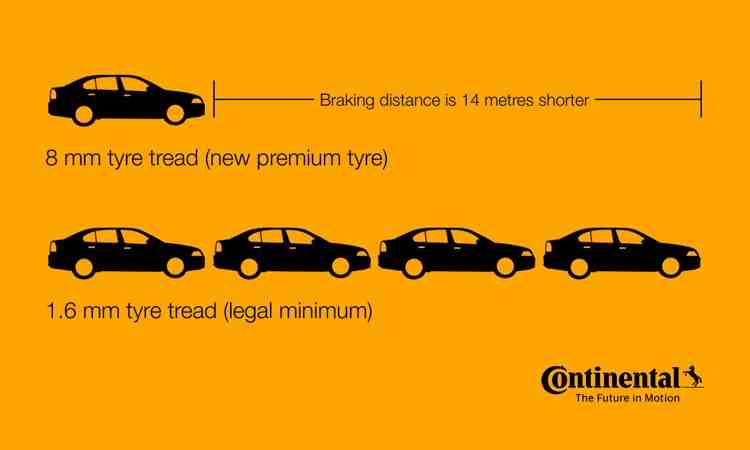
Worn tyres? They’re dangerous, full stop.
Pioneered by engineers at Continental Tyres in 1904, tyre treads – the grooves on the tyre – were designed to expel road-surface water, so that the tyres rubber can grip the road. While new tyres are very effective at this, worn tyres are not.
Imagine two cars both travelling at 50 mph. Car A has brand new tyres with 8mm tread all round, while Car B’s tread is just about legal at 1.6mm. If both drivers brake at the same time, Car A will stop nearly 14 metres shorter than Car B – that‘s three car lengths! Now imagine what could be in Car B’s path… Learn more about why tyre tread depth is so important on our blog. In the meantime, book in a free tyre check with Kwik Fit today for peace of mind about your tyres.
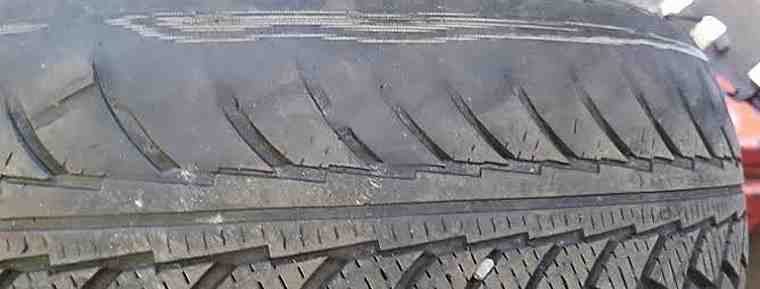
Tyre pressure matters, whatever the weather
Under-inflated tyres make your car more difficult to control because the tyres can’t get a proper grip on the road surface. When tyres have too much air in them, the part of the tyre that makes contact with the road is reduced which results in less grip. Less grip means it takes longer to stop, whatever the weather.
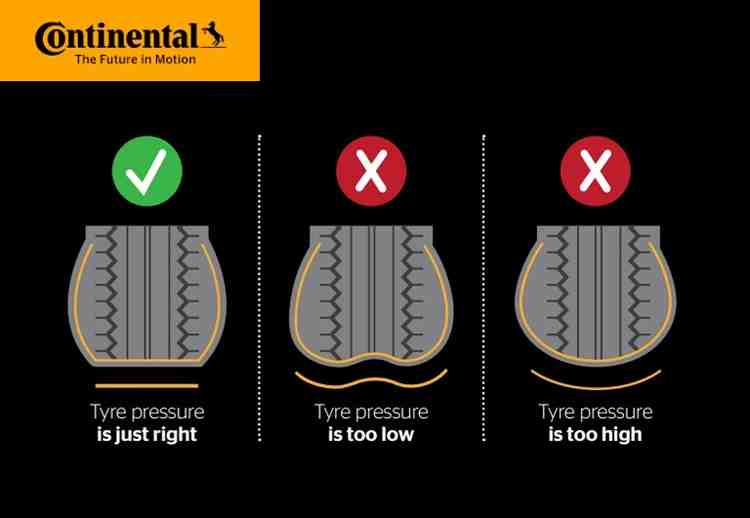
As well as being unsafe, incorrectly-inflated tyres wear out unevenly and need replacing more often. Under-inflated tyres wear at the edges which affects driver handling. Over-inflated tyres, on the other hand, wear more at the tyre centre, resulting in a loss of tyre tread just where it makes most contact with the road and where you need the most grip.
Shorter stopping distances mean being safer everywhere
Wherever you drive, you always need to be prepared to stop.
In towns and cities, you'll need to be alert to pedestrians, particularly children who can step out without warning. In the countryside, it could be an oncoming car on a narrow lane. On the motorway a sudden build-up of traffic might mean you’re suddenly braking to avoid coming into contact with the cars ahead. In all of these situations, your ability to stop quickly can prevent accidents and save lives, including your own.
Are premium tyres safer for reducing stopping distances?
Why pay extra for premium tyres? It’s a question we’re often asked at Kwik Fit, and we understand why. Alongside evidence that premium tyres are in fact less expensive over time than budget tyres comes another, much more important answer. If you value your safety and that of the people around you, it’s clear that premium tyres are the correct choice.
Your ability to react quickly, your brakes and the tyres you purchase are the three crucial factors in being able to stop quickly and safely. And the truth is that, due to their lower quality rubber composition, budget tyres just aren’t as effective at gripping the road, resulting in a significantly longer stopping time and distance, especially in wet conditions.
Next steps to ensuring safer stopping distances
If you’re concerned about the quality of your tyres and want expert advice on the best ones to buy for your car, get in touch with your nearest KwikFit team for impartial advice. Our tyre team can also answer any questions you have about stopping distances, how to spot the signs of tyre wear, and advise you on tyre pressures. Contact us today.
Any facts, figures and prices shown in our blog articles are correct at time of publication.
Featured Articles
Can My Tyre Be Repaired?
Wednesday 22nd November 2023
It can be hard to tell if your puncture can be repaired or not. Read our handy guide to understand if your tyre can be saved or if you need a replacement.
How Long Do Tyres Last & How To Identify Wear
Wednesday 18th October 2023
Driving on old or worn tyres can be dangerous so you need to maintain them properly. Read about how long tyres should last and how to know if your tyres are old.
Wet Weather Driving Tips – Staying Safe in the Rain
Thursday 27th October 2022
Driving in the rain isn’t only a pain but can be surprisingly hazardous – here are our top tips for staying safe in wet & icy weather this winter.

